Featured Comment:
“I’ve been missing this dish from Ootoya now that I’m back in the USA. Thank you for creating this recipe for it as my guidance. It was pretty good!”
– Gen
What is Ootoya-style Black Vinegar Chicken?
Ootoya is a restaurant chain that specializes in Japanese cuisine. It’s well known for its simple, comforting home-style dishes served in a “teishoku” style with rice, salad, pickles, and miso soup. As of 2020, there were 147 directly operated and 200 franchise restaurants across Japan, and 15 directly operated and 101 franchise restaurants overseas.
The name “Tori to Yasai no Kurozuankake” (鶏と野菜の黒酢あん) translates to “Sweet and Sour Chicken and Vegetables with Black Vinegar.”
The main component is aged rice vinegar, which has a dark hue and subtle flavor. Since it’s not too sour, kurozu is often compared to balsamic vinegar, but with a little less sweetness.
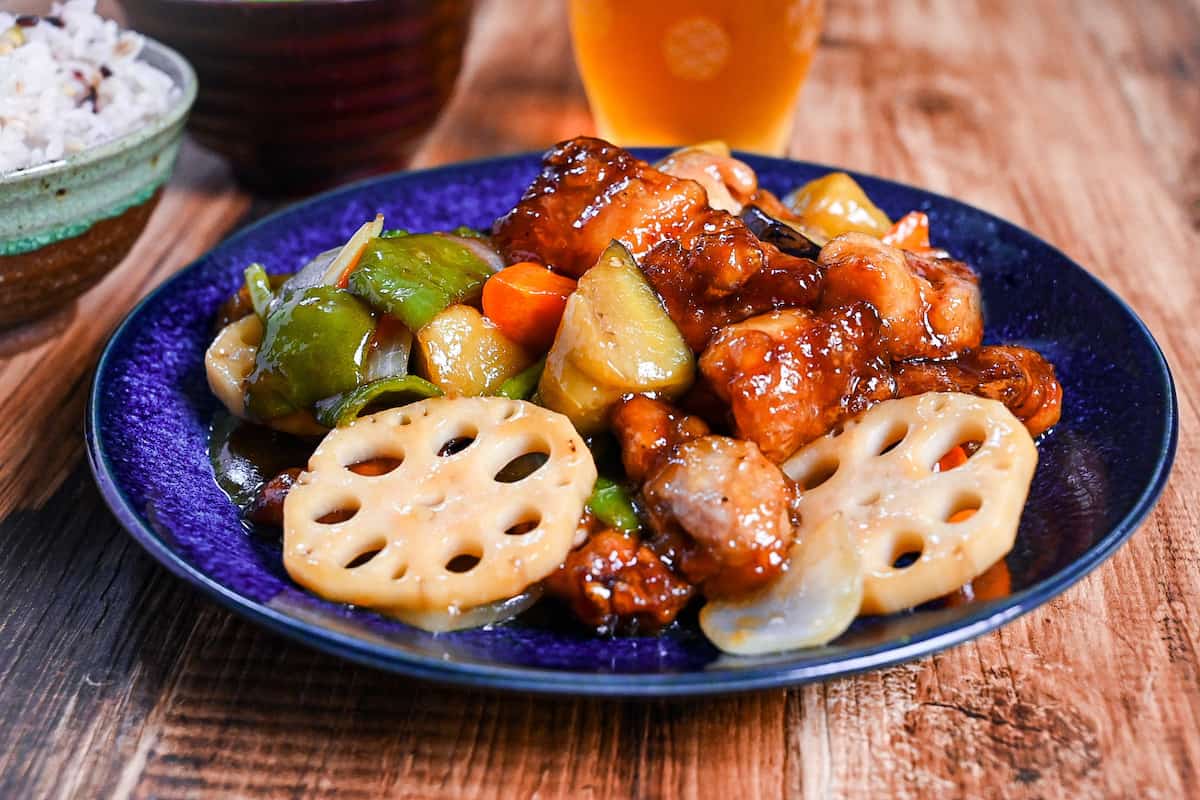

How I Developed This Recipe
I have to be honest with you—this recipe isn’t entirely from scratch. Why not? Otoya has published a recipe for kurozu on an online platform in Japanese only (although it’s not the same as what they serve at their restaurants). I’m not following the recipe exactly to write this article, but I took inspiration from it.
My version is simpler and uses more accessible ingredients. Plus, I make fried chicken a totally different way.
Anyway, if you get the chance, I highly recommend going there! They have a great selection of traditional Japanese dishes on the menu. The ingredients are fresh, and everything is made on-site (no frozen items)!
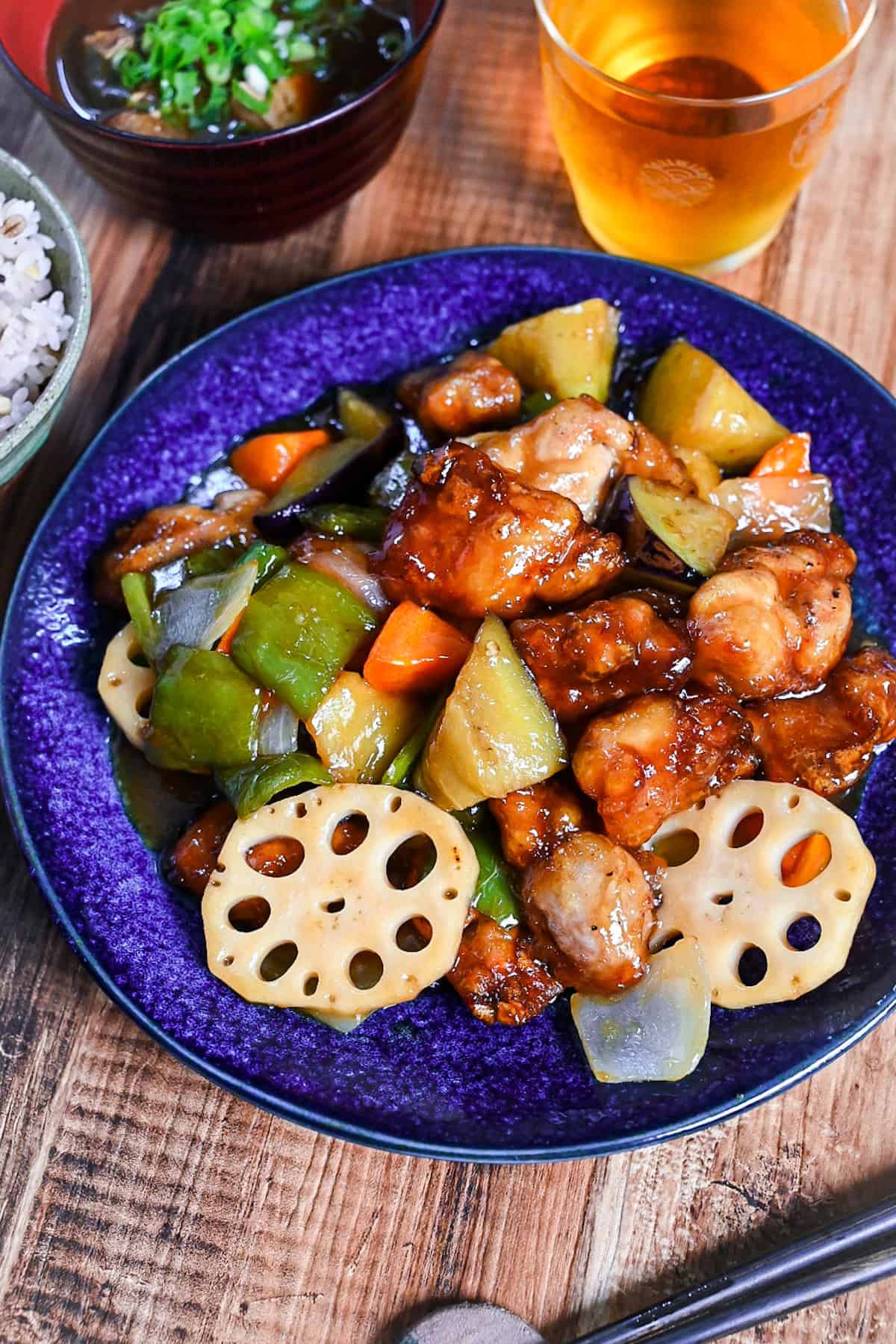
Visual Walkthrough & Tips
Here are my step-by-step instructions for how to make Ootoya-style Black Vinegar Chicken at home. For ingredient quantities and simplified instructions, scroll down for the Printable Recipe Card below.
Cut the chicken thigh into medium bite size pieces.
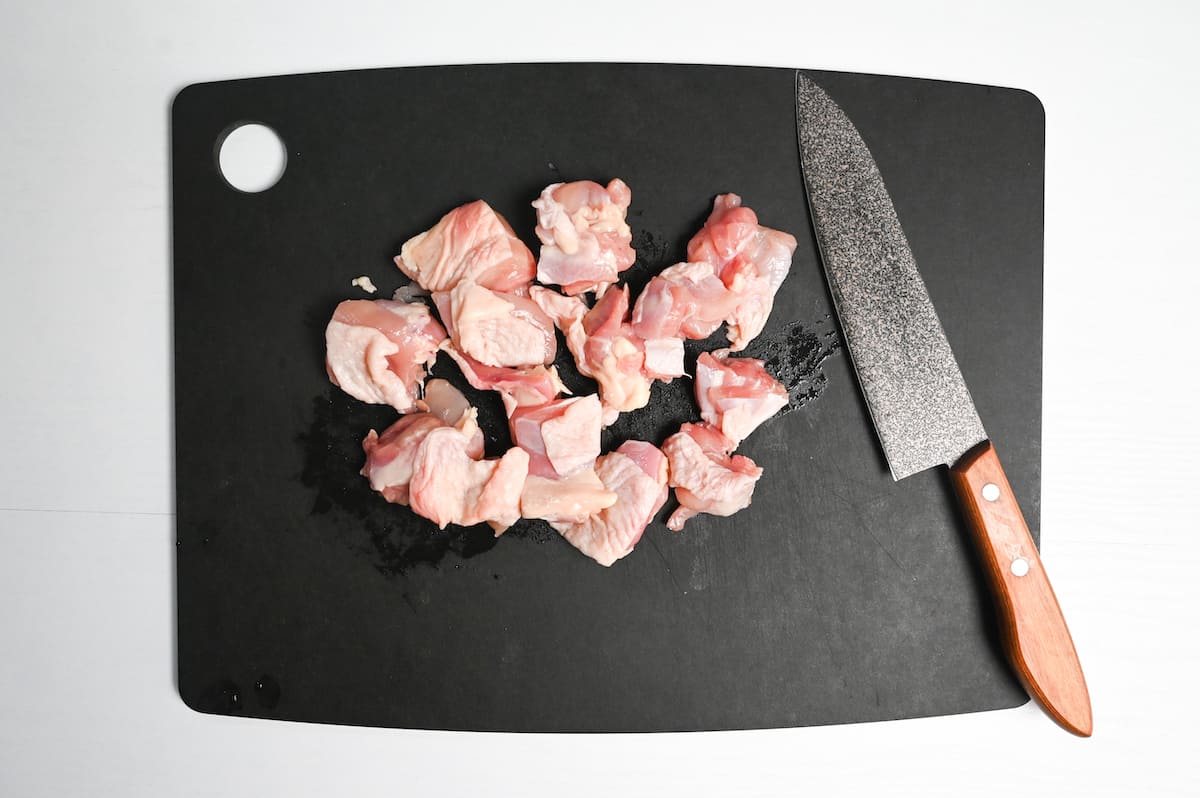
Place them in a container and add soy sauce, sake, grated ginger and grated garlic. Mix thoroughly until the chicken is evenly coated. Cover and leave to marinate in the refrigerator until the vegetables are cooked.
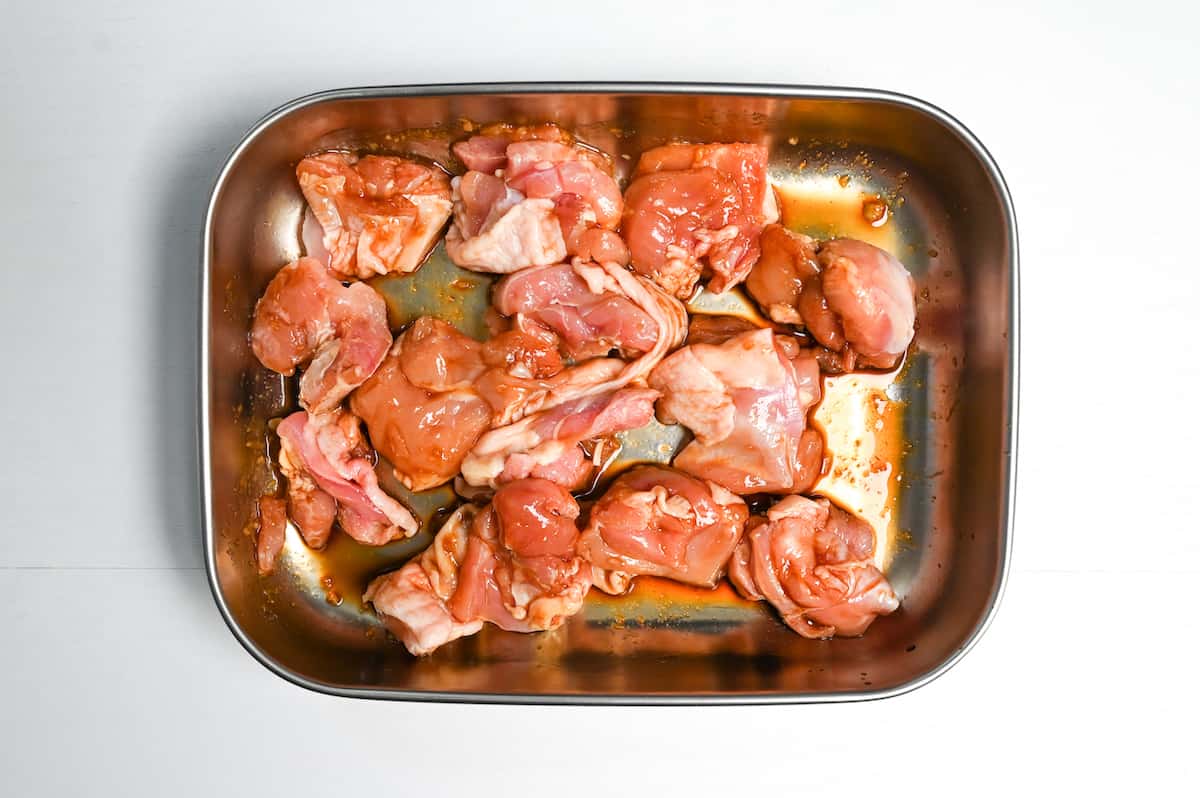
Take a measuring jug and add light brown sugar, apple vinegar, soy sauce, Japanese black vinegar, mirin, sake, water and cornstarch.
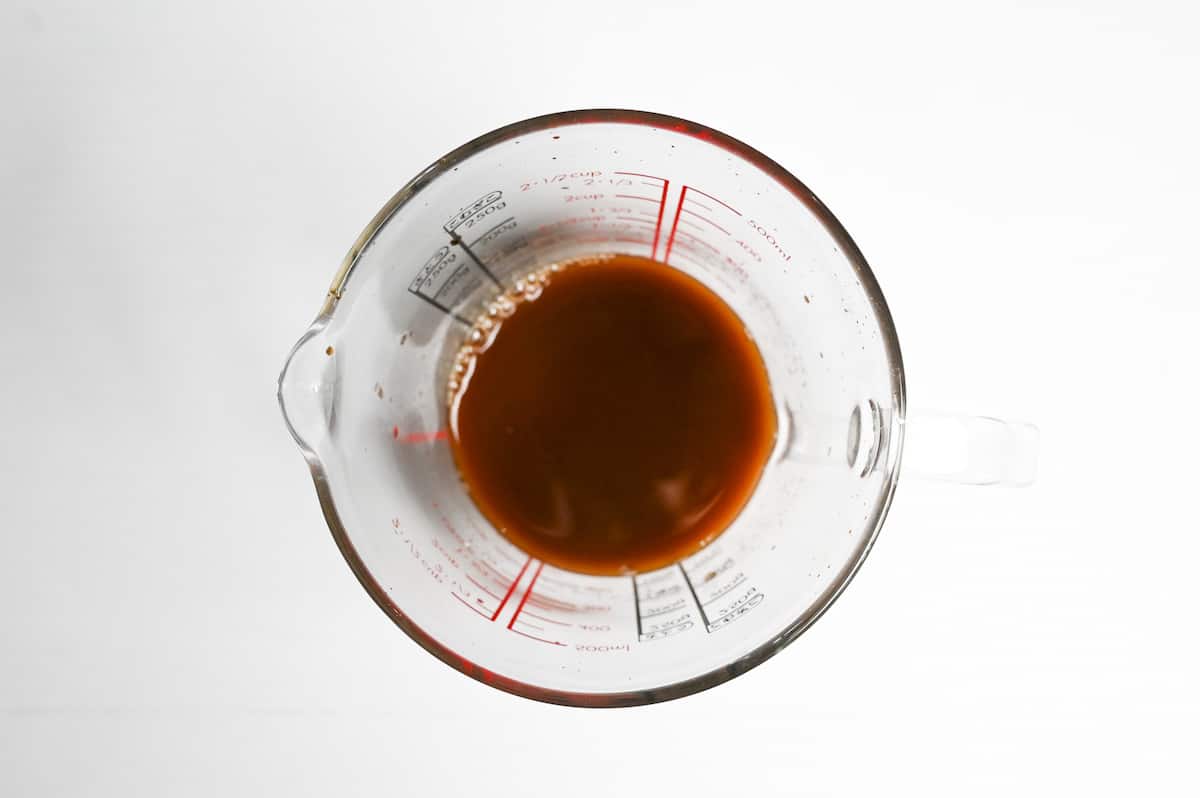
Mix until the sugar and starch have dissolved, and set aside for later.
Start preheating your oil to 180°C (356°F). Since this recipe is shallow fried, use a pan wide enough to place all your ingredients in one layer. The oil should be about 3cm high (approx just over 1 inch).
Cut the eggplant into rough pieces with the skin on and place them in a bowl of water for 5 minutes. This will prevent the eggplant from absorbing too much oil when it’s fried.
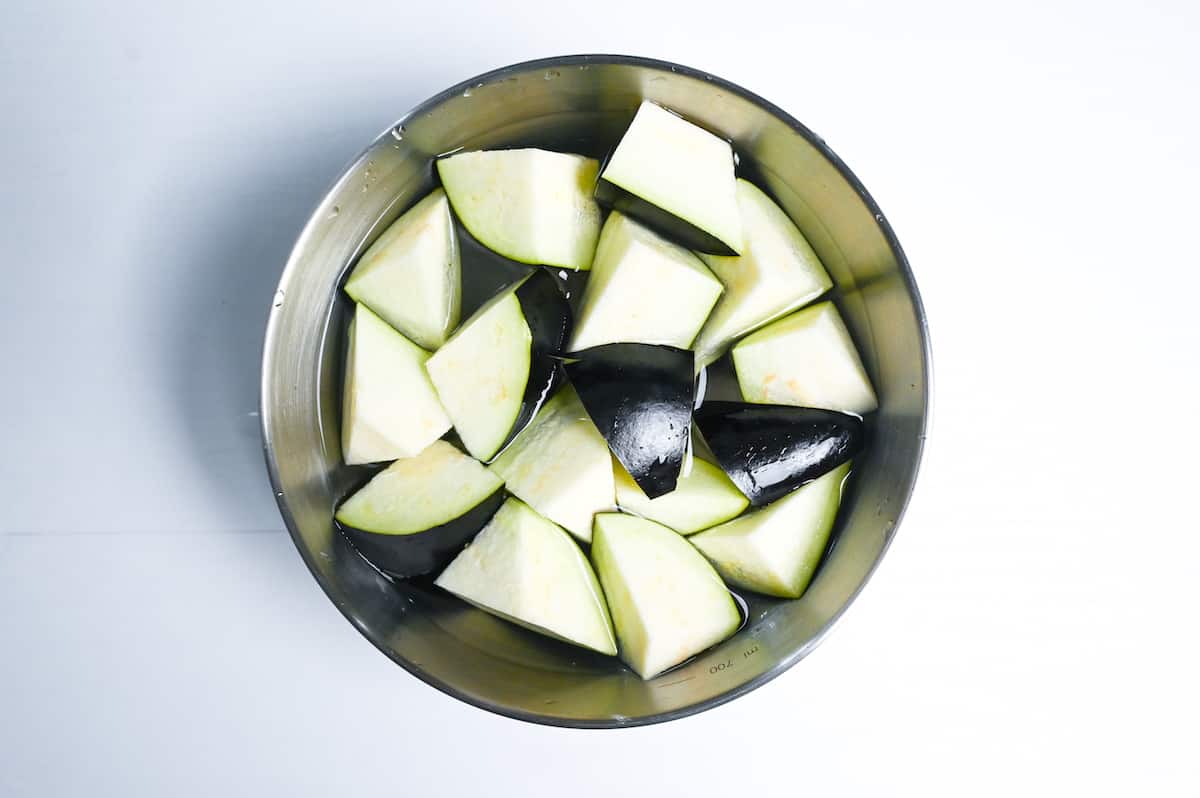
Peel the lotus root and carrot, then cut the lotus root into thick slices and place them in the bowl with the eggplant. Roughly cut the carrot, onion, and bell pepper.
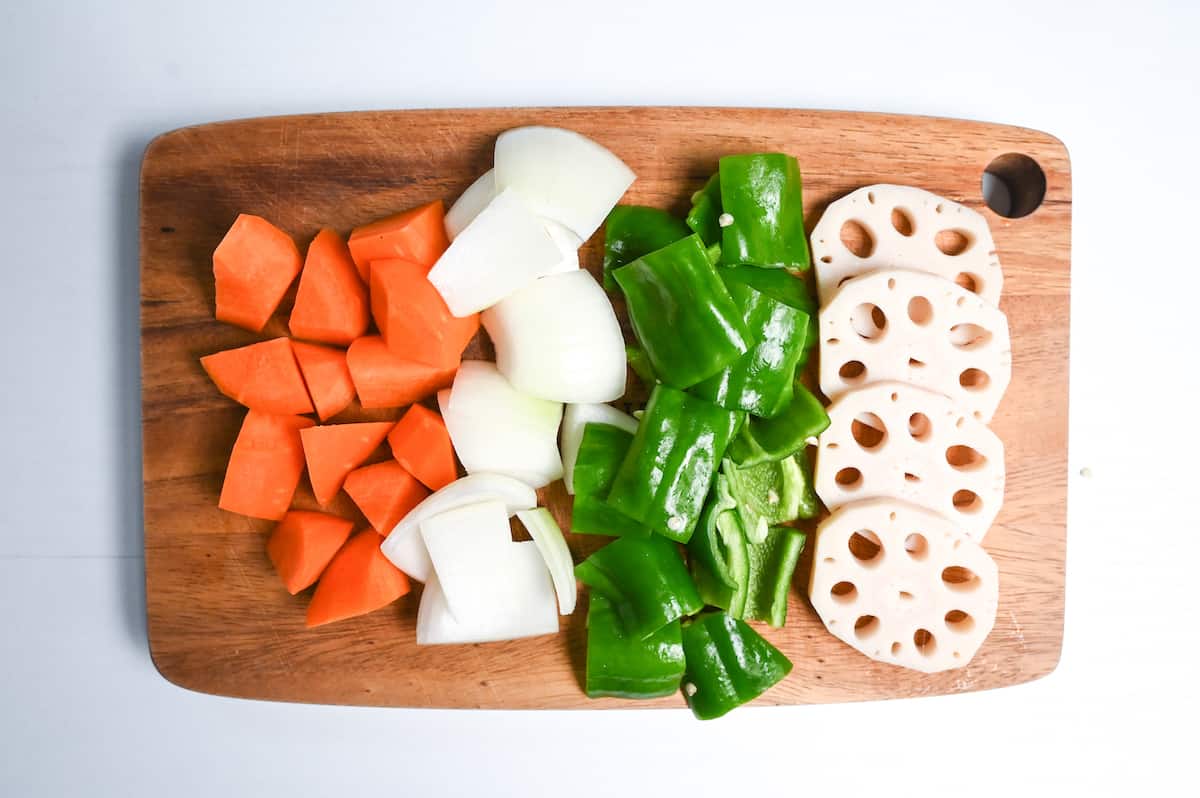
Once the oil is hot, add the carrots to the pan and fry for 3 minutes on each side.
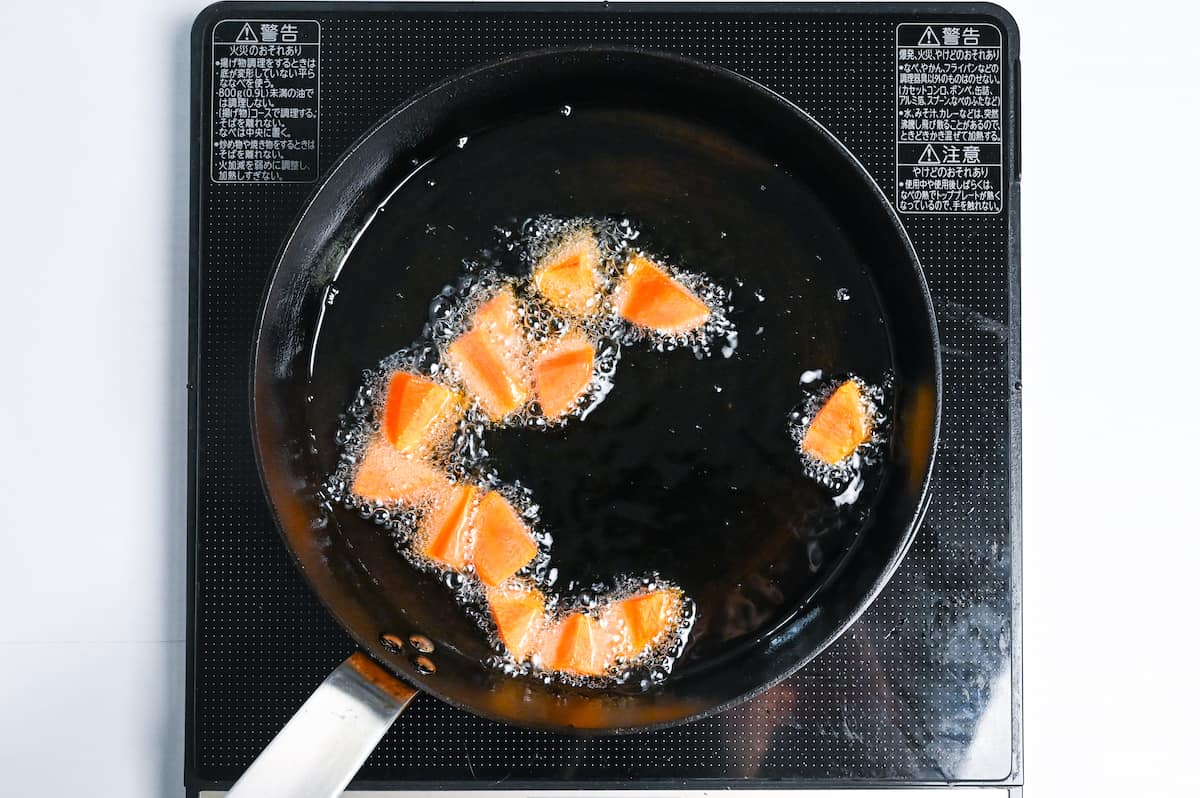
Once cooked, use a mesh spoon to scoop them up and transfer them to a wire rack to drain the excess oil.
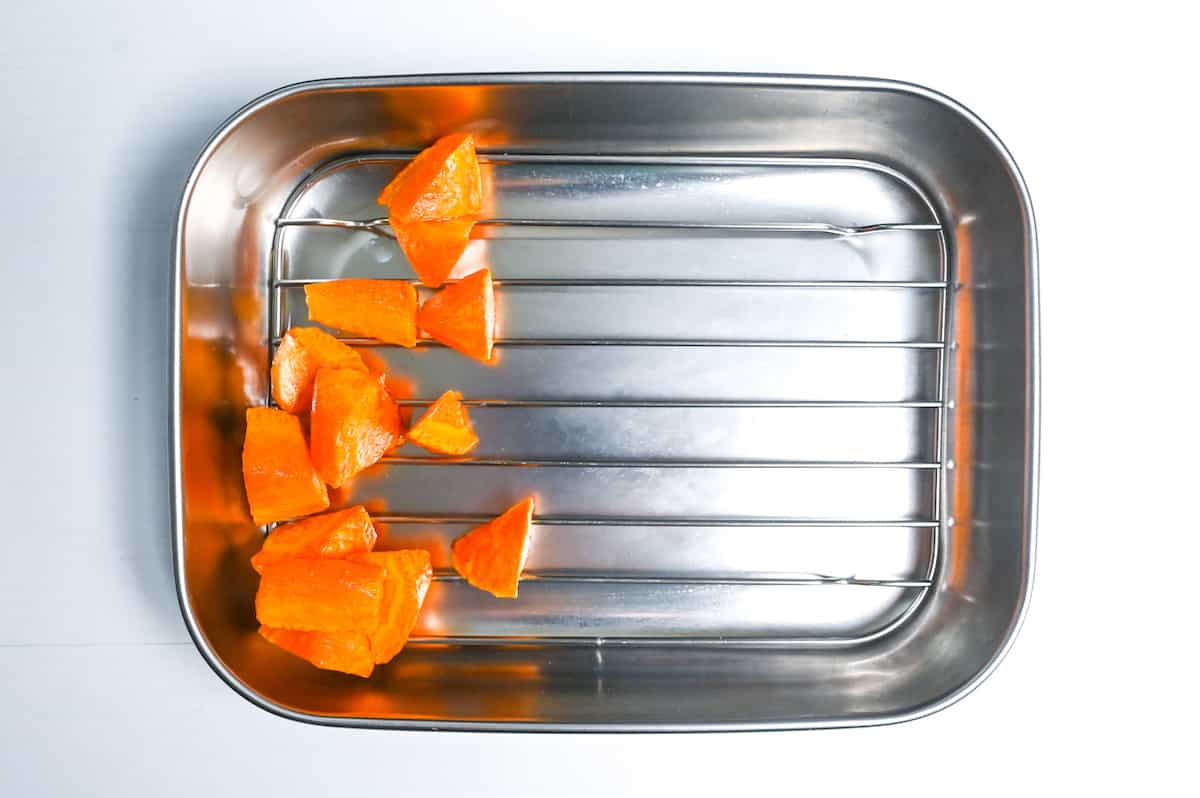
Remove the eggplant and lotus root from the bowl of water and dry them thoroughly with kitchen paper. Place them in the oil with the bell pepper and fry for 1 minute.
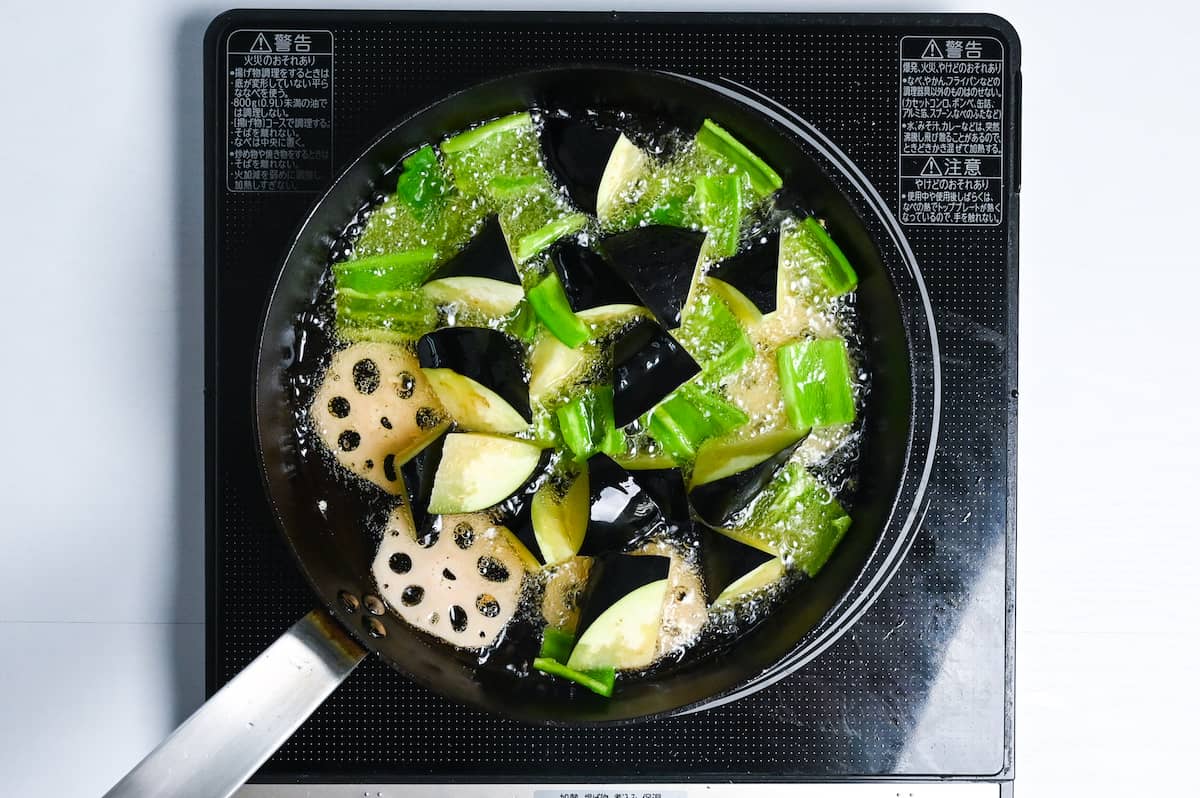
Then, transfer to the wire rack to drain.
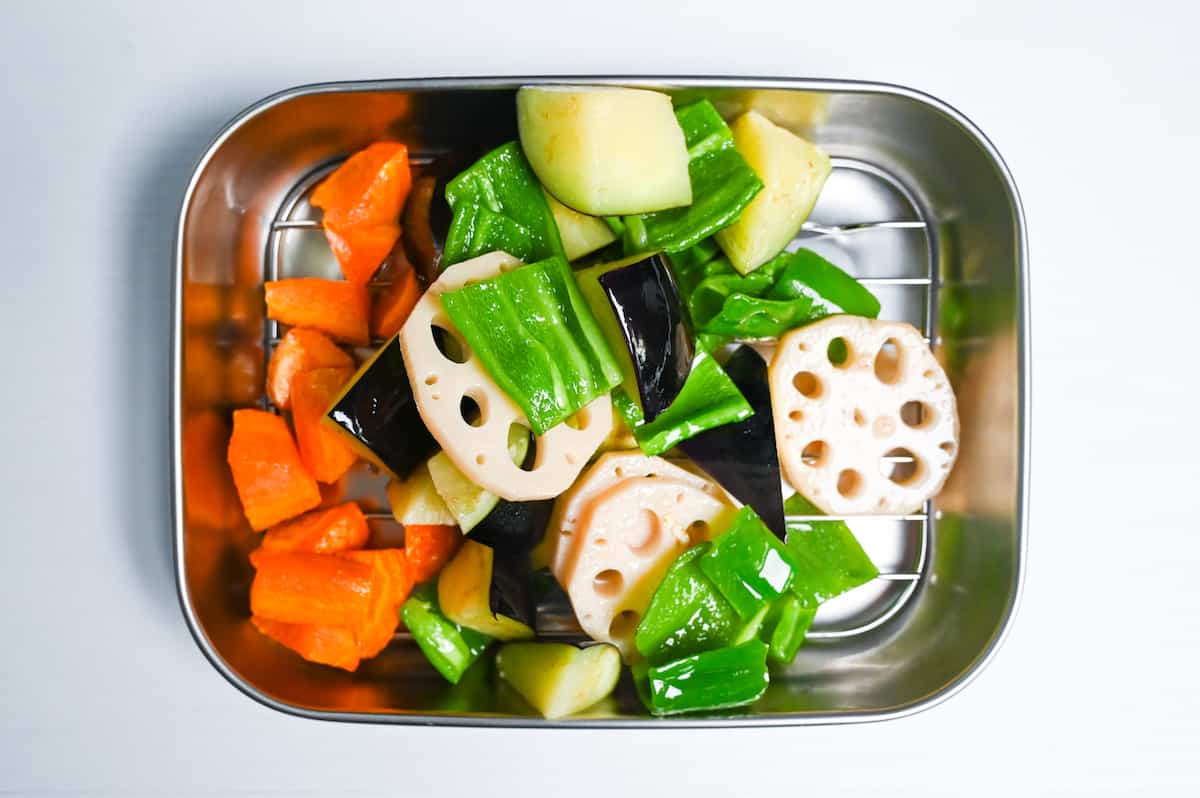
Finally, add the onion and fry it for one minute.
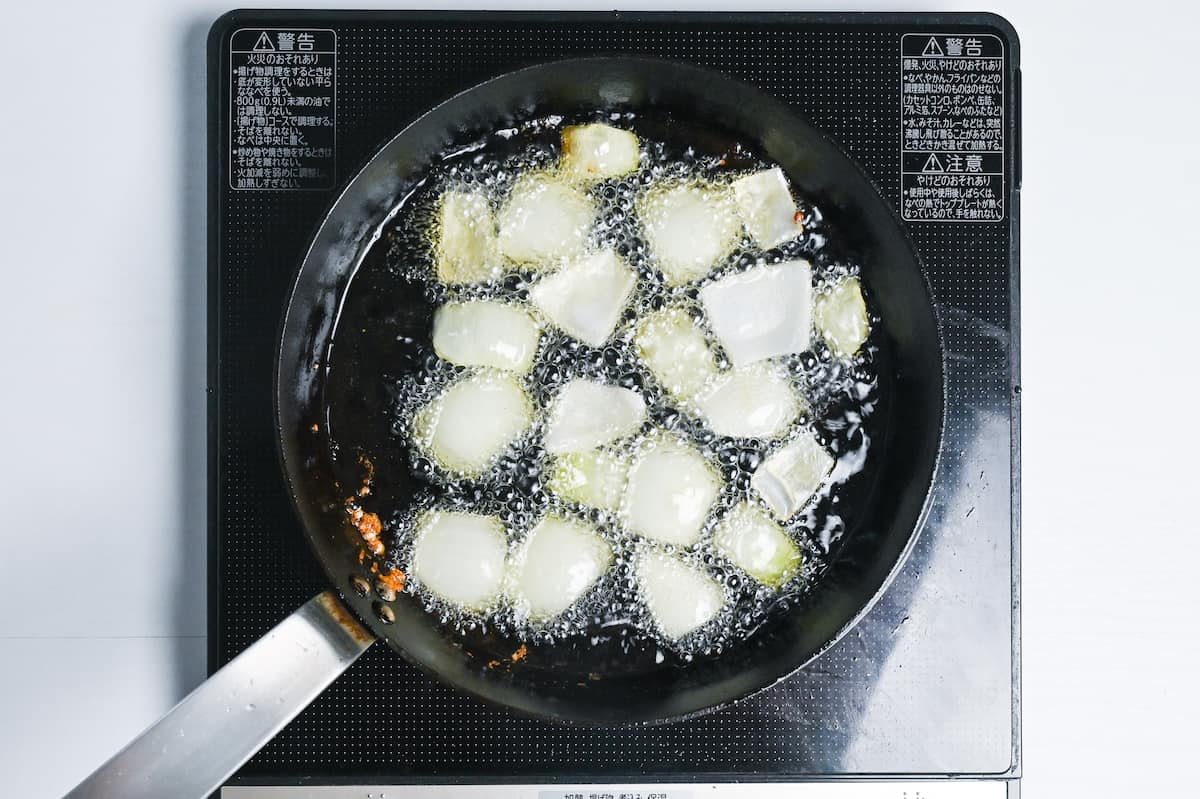
Transfer to the wire rack and lower the heat of the oil to 170°C (338°F).
Add cornstarch to a container and take the chicken from the fridge. Shake the excess marinade off each piece and then roll it in the cornstarch until generously covered.
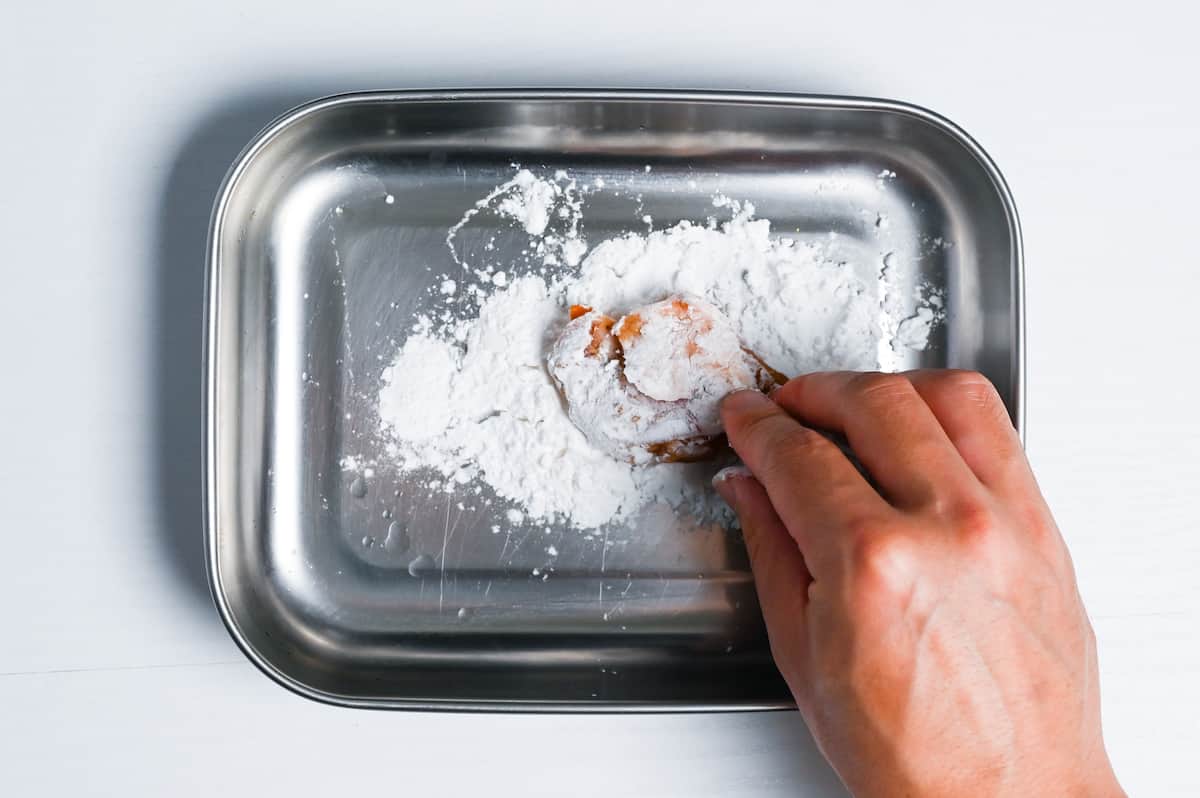
Place the chicken in the oil and fry for 3 minutes on each side.
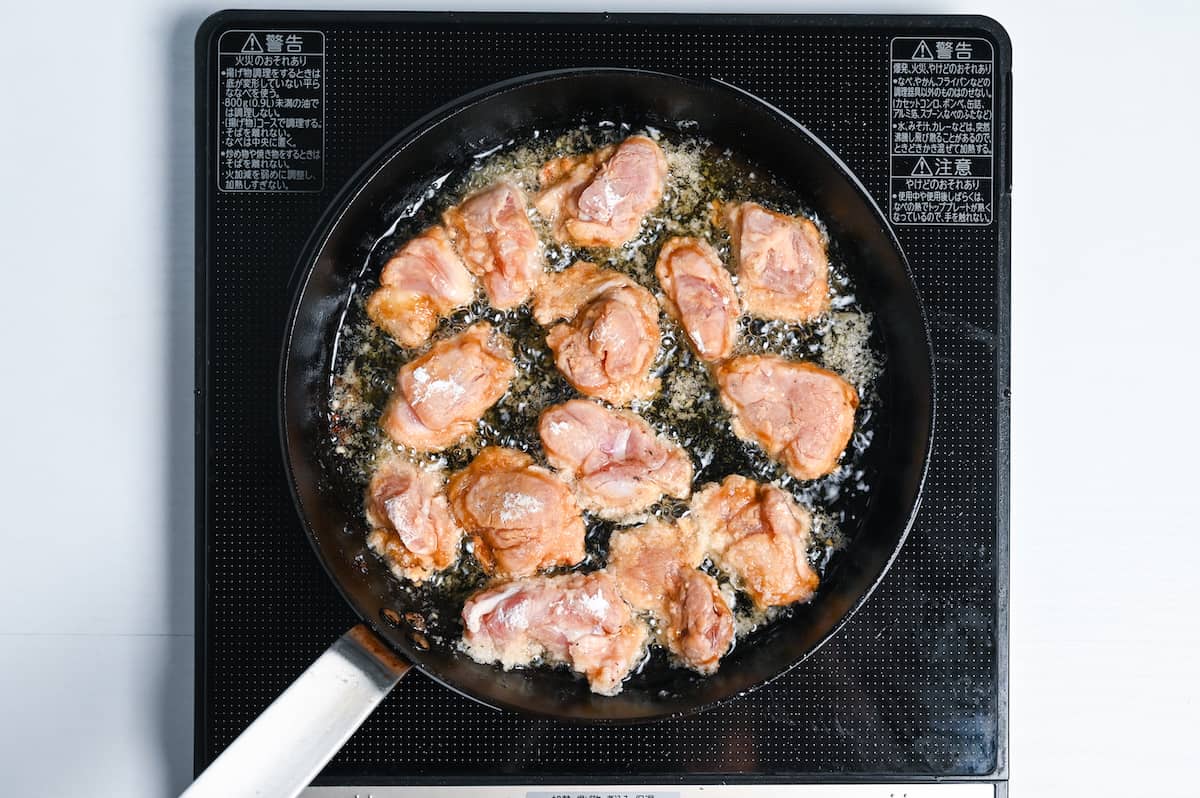
Increase the heat to 190°C (374°F) and fry for another 1 minute on each side.
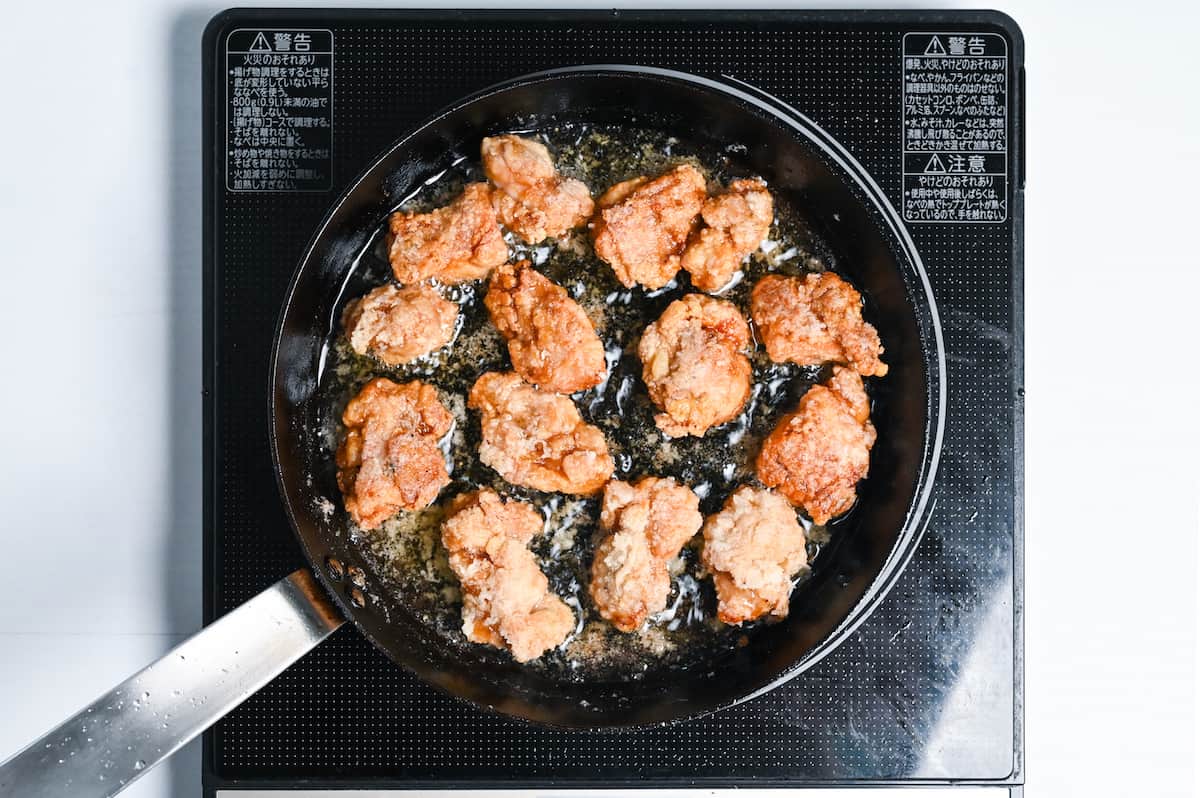
Transfer to a wire rack to allow the oil to drain off.

Heat a wok, add a small amount of oil and add the vegetables and chicken. Take the jug of sauce from earlier and mix well before pouring it into the wok.
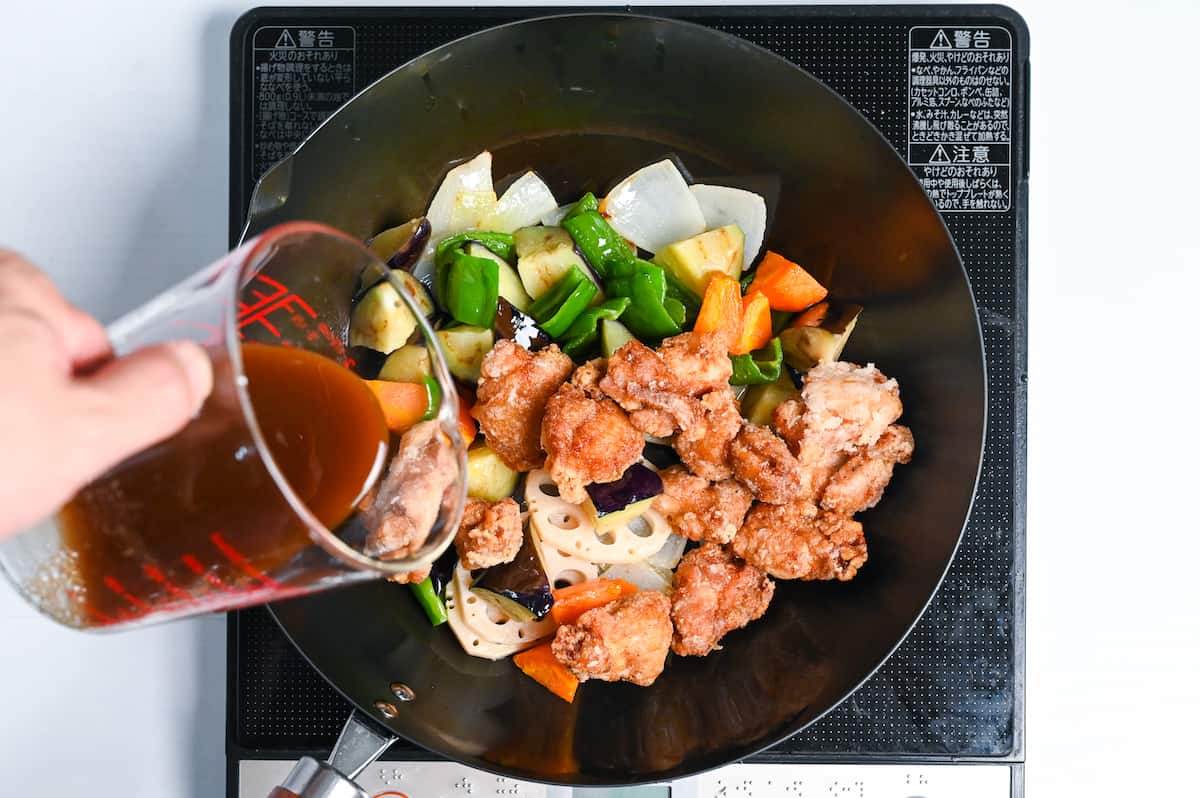
Stir fry until the sauce is thick and glossy.
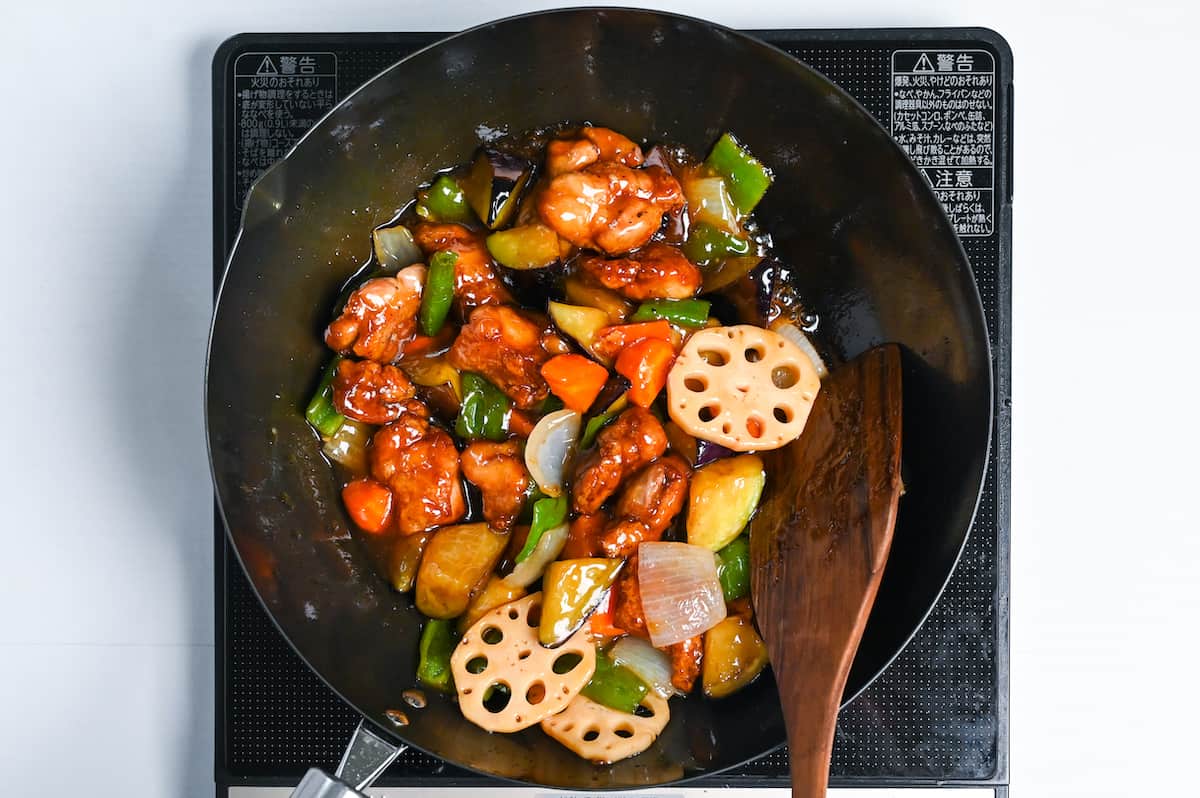
Once thickened, remove the pan from the heat.
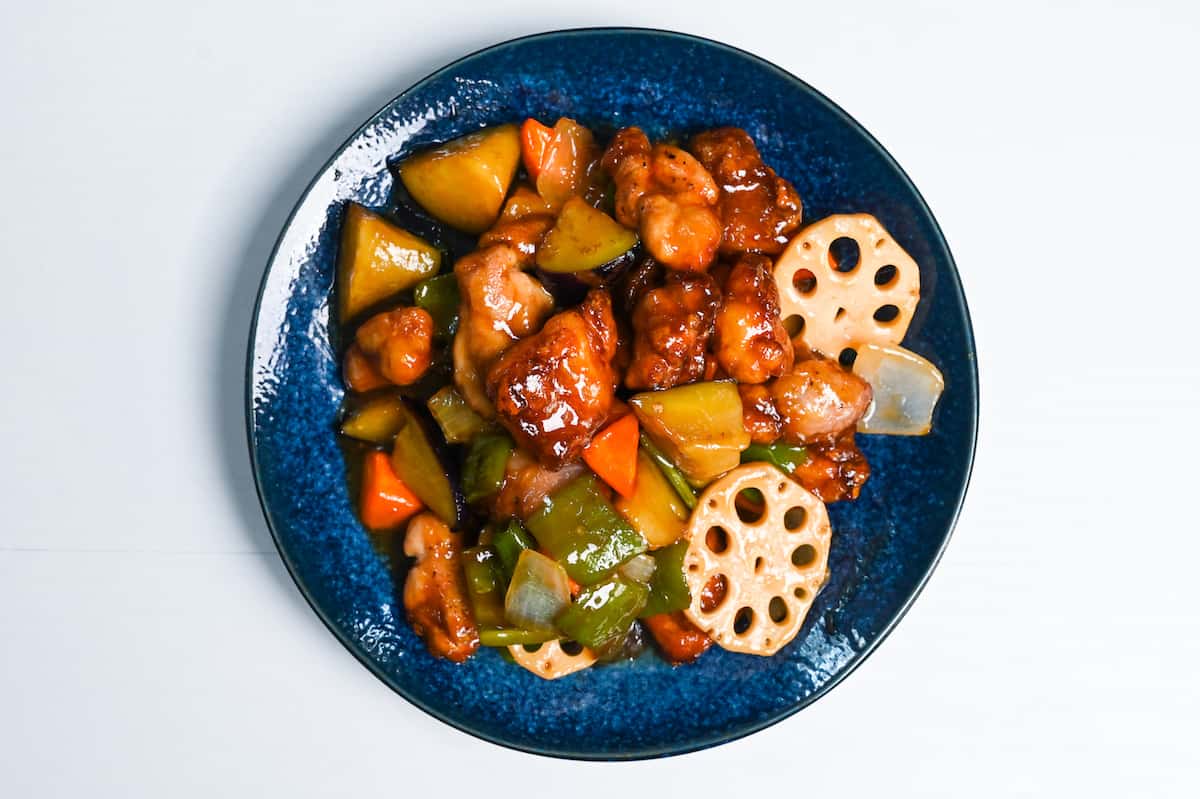
Transfer to a serving plate and enjoy with rice, miso soup, and pickles or salad for the whole Ootoya experience!

FAQ
When it comes to black vinegar, Chinese black vinegar is also well-known. However, while Japanese black vinegar is made from brown rice, Chinese one is made from glutinous rice.
Yes, it can also be made with pork, white fish, prawns, or beef.
Ootoya is a Japanese teishoku-style chain restaurant that focuses on the quality of ingredients and on-site cooking (no frozen stuff). The restaurant features a well-balanced menu that is similar to home cooking and has restaurants throughout Japan and around the world.
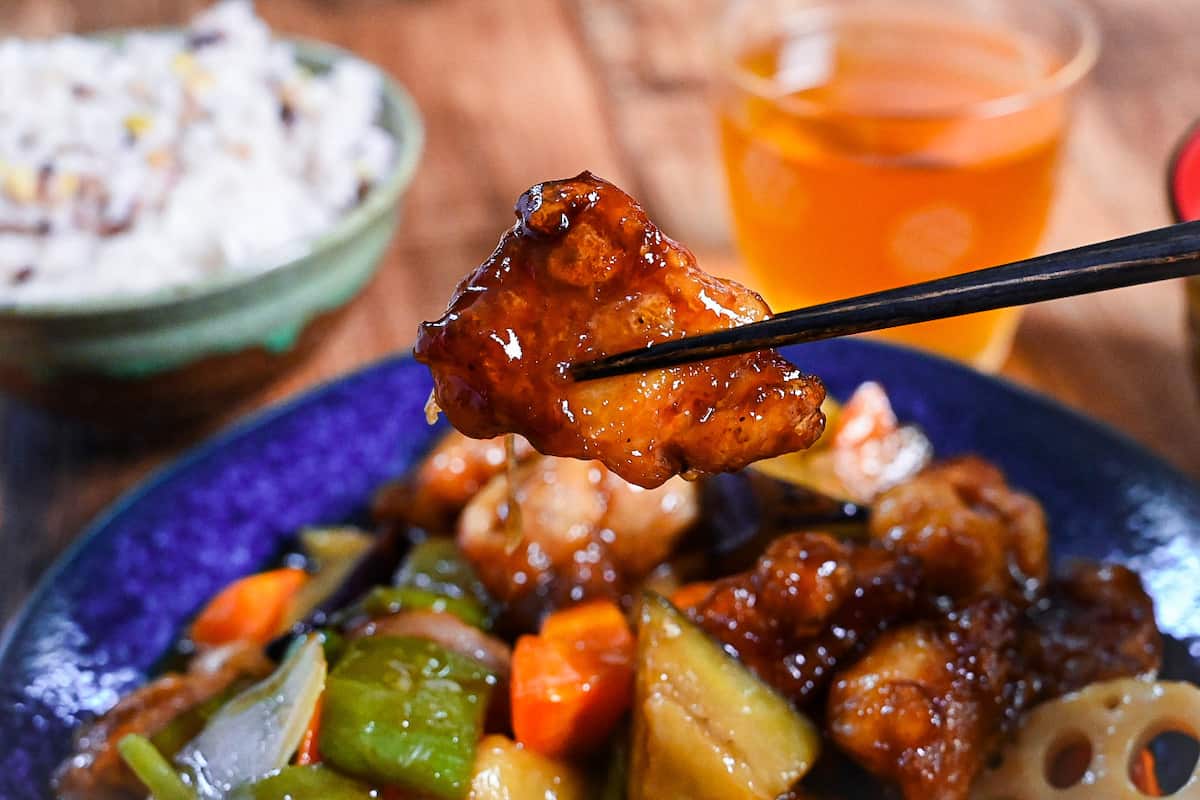
I hope you enjoy this Black Vinegar Chicken recipe! If you try it out, I’d really appreciate it if you could spare a moment to let me know what you thought by giving a review and star rating in the comments below. It’s also helpful to share any adjustments you made to the recipe with our other readers. Thank you!
More Japanese Stir-fry Recipes

Ootoya’s Black Vinegar Sweet and Sour Chicken (Tori Kurozu An)
Equipment
- Mesh spoon
Ingredients
For the chicken
Sauce
Vegetables
- cooking oil for shallow frying
- 75 g carrot
- 100 g eggplant
- 50 g lotus root (renkon) optional
- 75 g yellow onion
- 100 g green bell pepper
Instructions
Marinating the chicken
- Cut 250 g boneless chicken thigh into bitesize pieces and place them in a container.

- Add 2 tsp soy sauce, 1 tsp sake, ½ tsp grated ginger root and ½ tsp grated garlic. Mix thoroughly and make sure all of the chicken is coated, then cover and marinate in the fridge for 10 minutes.

Kurozu an Sauce
- Take a jug or bowl and add 3 ½ tbsp light brown sugar, 2 tbsp apple vinegar, 1 ½ tbsp soy sauce, 2 tsp Japanese black vinegar (kurozu), 2 tsp mirin, 1 tbsp sake, 1 tbsp water and 1 tsp cornstarch. Mix until the sugar and cornstarch are fully dissolved and set aside for later.

Prepping
- Take a large frying pan and add about 2cm cooking oil (approx 1 inch). Heat the oil to 180 °C (356 °F). While you wait for the oil to heat up, cut the vegetables.

- Roughly cut 100 g eggplant with the skin on, and soak in cold water for 5 minutes. If you're using 50 g lotus root, peel it and cut it into thick slices, then place them in the bowl with the eggplant.

- Peel 75 g carrot and cut it into rough pieces. Cut the 100 g green bell pepper and 75 g yellow onion into roughly 2cm (approx 1 inch) squares.

Frying
- Once the oil has finished heating, add the carrot and fry for 3 minutes on each side.

- Remove the carrot and place on a wire rack to allow the excess oil to drip off.

- Remove the eggplant and lotus root from the water and dry each piece thoroughly with kitchen paper. Place each piece into the oil along with the green pepper and fry for 1 minute.

- After one minute, remove and drain on the wire rack.

- Add the onion to the oil and fry for 1 min. Once finished, transfer to the wire rack and reduce the heat to 170 °C (338 °F).

- Sprinkle 2 tbsp potato starch onto a plate and roll each piece of marinated chicken in the starch before placing it into the oil.

- Fry the chicken for 3 minutes on each side.

- After 6 minutes in total, increase the heat to 190 °C (374 °F) and fry for 1 more minute on each side.

- Transfer the chicken to a wire rack to allow the excess oil to drip off.

- Finally, heat a large frying pan or wok on medium, add a small drizzle of oil and then add the fried vegetables and chicken. Take the jug of sauce from earlier and give it a mix before pouring it into the pan.

- Stir fry until the sauce has thickened and coats the chicken and vegetables.

- Serve up and enjoy!





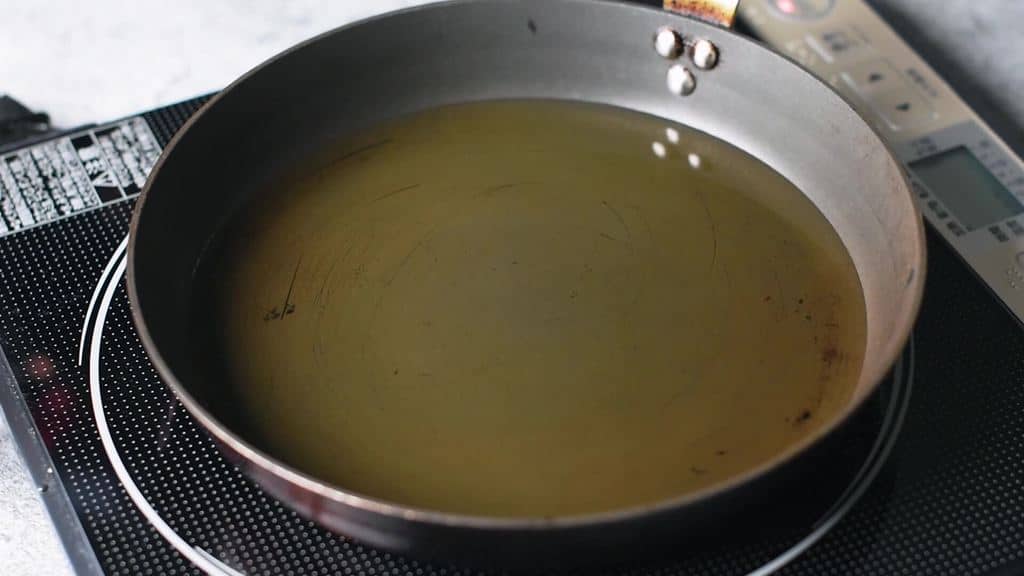
I’ve been missing this dish from Ootoya now that I’m back in the USA. Thank you for creating this recipe for it as my guidance. It was pretty good!
I get that, Ootoya has some great dishes! Happy to hear you enjoyed the recipe, thank you for the rating! 🙂
Thannk you for the recipe! I have a bottle of chinkiang vinegar and I need to finish it before I move to another city.. I will make your recipe tomorrow, hope I can succeed like you! 🙂 Also, I don’t have apple cider vinegar, what can I substitute it with? Thank you again!
You’re most welcome!
If you don’t have apple cider vinegar you can substitute with 1 1/2 tbsp of rice vinegar and 1/2 tbsp of apple juice instead. Hope that helps and hope you enjoy the recipe! 🙂